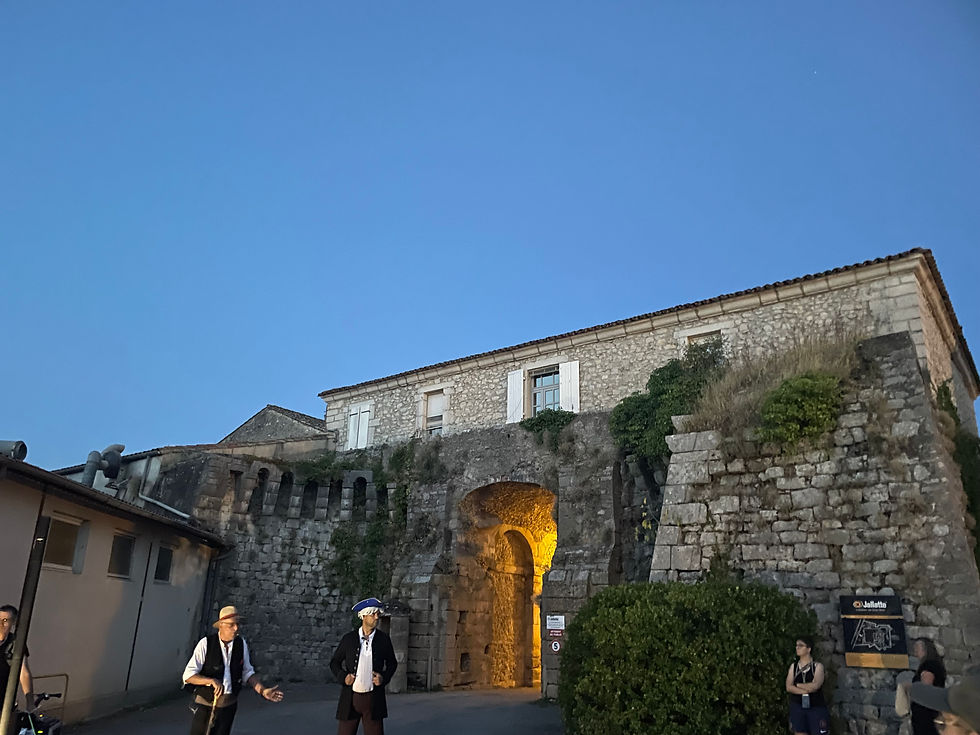Bridges of Life
- JanetJoanouWeiner

- Oct 11, 2020
- 3 min read
Our little town boasts many bridges. Since a river–actually two–run through St.Hippolyte du Fort, we need ways to cross over the waters. Indeed, it's easy to take bridges for granted as we drive or walk on them daily. But if they didn't exist, we'd be forced to take very long detours to get from one part of town to another. Or, allow our feet and legs to get soaked!

Bridges, literally and as symbols, provide passage from one side to the other, a crossing over, transition. They can serve as a metaphor for surmounting difficulties or obstacles. Bridges facilitate connections. And very often, they're just plain pretty.
Think of how many stories and movies involve bridges. Whether being blown up in war to prevent enemy entry or as romantic meeting places, they hold a certain significance. Jesus himself was a bridge between us humans and our heavenly Father.
We named our ministry center "Bridges of Life" before we moved here, with the goal of building links between our loving God and a hurting world. We train students in biblical principles then send them out to serve in various countries.
To our delight, we landed in the Château de Planque, originally built in the 15th century, on the Vidourle river that flows just across the fields out front. So what's directly across from the entry of our building? Not one, but two bridges. Nice!


The lower bridge is an extension of a road leading into our town, the same one used by Louis XIV's dragoon soldiers in the 17th century and the SS Nazis in 1944. This bridge, the Pont de Planque, dates back to medieval times when it was simply a wooden plank thrown across the river. Our home, the Château de Planque and neighborhood grew up around this bridge.
The grand, arched "viaduct" bridge was built in 1868 to support a railroad line. Four trains per day that passed through at that time, offering transport of "passengers, postal services, goods, food, money, valuables, and dogs." I have to say that, thankfully, the train stopped running in 1989 as it passes within meters of the top floors of our Château. That would be quite the rumble!

The railway line has now been transformed into a pedestrian and cycling path across the top, charmingly called la voie verte, and affording spectacular views of surrounding mountains, valleys and towns. It is well used and appreciated by all.

The voie verte also gives anyone who uses it an excellent view into the grounds of the Château. And we can hear their voices and conversations as they pass by.
More than once, friends in town have mentioned the work progressing on our land or the damage caused by the last windstorm. Oh well, we have nothing to hide (although those of us whose windows face the bridge make sure their shutters or curtains are closed at night!)

I'm grateful for the variety of bridges and how they add little dashes of architectural interest to our small town. The fact that most of them are quite ancient and built from local granite or limestone is also a plus.
There's something uplifting, about walking over a river–or valley, a gorge, or even just a road–whatever it is that couldn't be crossed without a bridge. A grander view opens up, a new perspective gained, deep breaths taken. Like so many things in life, the journey is as significant–or even more so– than the destination.
Oui, la vie est belle!















Is it possible to be homesick for a place you've never been to?
Your town sounds lovely Juliet! The name alone is beautiful. Yes, the sound of running waters is always delightful!
Thank you for sharing the beauty of your surroundings and of chateau de la Planque - I now understand the significance of its name! The village I live in ( Belle Isle en Terre) also has 2 rivers running through it and a few pretty little bridges criss-crossing the town. Though not as spectacular as those in St Hypolyte, they are adorned with flowers in the summer and make going shopping a special occasion every time! And it's lovely hearing the sound of flowing waters...
Yes it is Kimberly! My American brain/soul never stops marveling over it all!
How beautiful it is to live in a place steeped with history–recordable history at that!